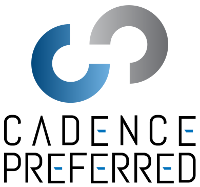Insights Inspired by “The Conversion Code” (Ch. 1)
At least for most of the clients we work with, it’s not just “need more leads?” (the title of this chapter). It goes well beyond that, because leads are life (at least the life of the business).
Smith claims that people buy because they trust you or your business, and that on the web, great design builds trust. He then gives three sources for his assertion. I think the jury is out on whether great design builds trust specifically, but I’ll agree that clean, effective design conveys a sense of quality, professionalism, and competence. Assuming potential customers want (or even demand) quality, professionalism, and competence from the companies they buy from (and it’s fair to say they do), sure, design can increase a prospect’s trust in your company’s ability to deliver quality products and services.
Next, Smith discusses landing pages. Writes Smith: “a critical component of cracking The Conversion Code is to understand that for online lead generation and conversion, landing pages are a much better option than websites.”
AGREE! Full stop! Landing pages or microsites that are targeted at industries, segments (companies of similar sizes), and roles or personas convert significantly better than general websites created for all prospects. When a prospect lands on your website, you want them to feel like you’re speaking directly to them. Targeted landing pages or microsites enable that conversation.
Referencing a study by Elizabeth Silence, Pamela Briggs, Lesley Fishwick, and Peter Richard Harris (https://www.researchgate.net/publication/221516871_Trust_and_mistrust_of_online_health_sites) Smith quotes participants in that study who mentioned things they liked or didn’t like about websites. Good advice to follow for your own site includes:
- Don’t clutter the screen. Keep it from looking busy.
- Don’t be too sales-y.
- Follow design best practices in terms of colors, text, and layout.
Smith also references design guidance from CodeCademy (https://medium.com/about-codecademy/reimagining-codecademy-com-1ebd994e2c08). Click on the link for detailed guidance. In summary, CodeCademy recommends:
- One column sites.
- Let your customers tout your benefits. Use testimonials and quotes.
- Less is more from a color perspective.
- Reduce the amount of information you ask prospects to give you when filling out forms.
- Limit calls to action to one per page.
- Focus on content on pages. Don’t clutter pages with extraneous buttons and other objects.
- Use white space and a clear organization of data on a page (titles, headers, etc.)
- Convey information via visuals.
- Make buttons and fields bigger.
- Make new users feel welcome.
From websites, Smith discusses live chat. If you work for a company with at least a few salespeople, you likely will always have someone available to enter a chat with prospects if they initiate them via a live chat option on your website. Some live chat tools can also notify employees that someone wants to chat even if said employees aren’t in front of their computer. Increasingly, companies are also using chatbots. The success of chatbots can be hit or miss all based on design and the organization of the content on the backend that enables the artificial intelligence (AI) of a chatbot. We’ve built chatbots for Microsoft and others. For an overview of chatbots, view our upcoming blog post on that topic (search using the tag ChatBot).

